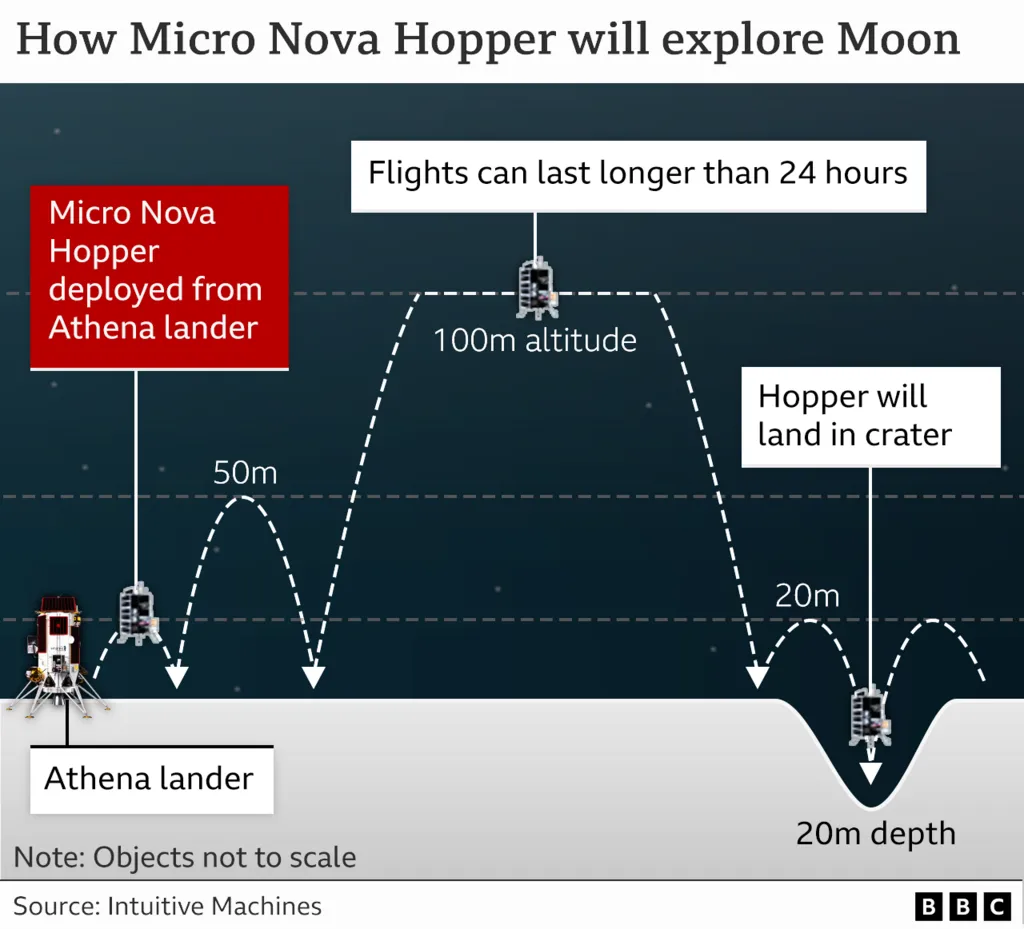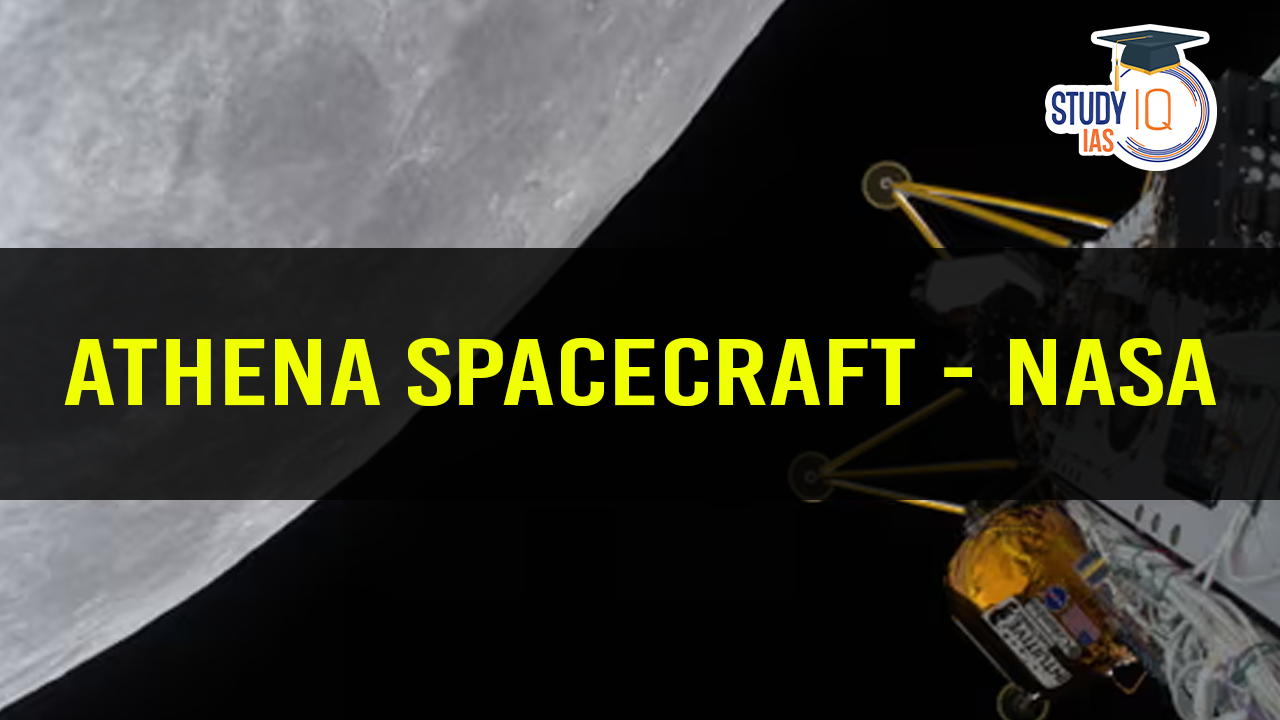Table of Contents
Context: Intuitive Machines has declared its second lunar mission, Athena, a failure after it missed its intended landing site on the Moon.
About Athena Spacecraft Lander
- It was developed by Intuitive Machines under NASA’s Commercial Lunar Payload Services (CLPS) program.
- CLPS program is designed to facilitate private sector lunar exploration.
- Location: Mons Mouton, approximately 160 km from the Moon’s South Pole—the closest landing to the South Pole ever achieved.
- NASA’s Lunar Reconnaissance Orbiter will soon capture images of Athena to determine its exact position.
Scientific Goals
- Primary Objective: Search for subsurface water ice—a crucial resource for future lunar missions.
- Conduct studies to support NASA’s Artemis program for long-term human exploration.
- Test advanced technologies that could be used for future lunar and Mars missions.
Athena Landing Failure and Mission Termination
- Athena missed its intended landing site by over 250 meters, landing sideways in a crater near the Moon’s south pole.
- The lander returned images confirming its position and activated a few experiments before losing power.
- Extreme cold and poor solar panel alignment made it unlikely to recharge, leading to mission termination.
- The Moon’s south pole is difficult to explore due to:
- Harsh sun angles affect solar power.
- Limited communication with Earth.
- Rugged, uncharted terrain.
- Athena’s landing (160 km from the South Pole) was the closest any spacecraft has reached this region.
- This was Intuitive Machines’ second lunar landing attempt:
- The first attempt (2024) also resulted in a sideways landing but remained operational for longer.
- In both Athena missions, last-minute failures in the primary laser navigation system caused problems during landing.
Scientific Instruments
Micro Nova Hopper (Grace) – A Jumping Robot
- Designed to hop across the Moon’s surface instead of rolling like traditional rovers.
- It can leap 100 meters high and travel up to 2 km (1.2 miles).
- Planned to make five jumps to land inside a permanently shadowed crater to capture the first-ever images of its interior.
- Permanently shaded areas are ideal locations for finding ice, as they remain at extremely low temperatures.

NASA’s Scientific Instruments
- Trident Drill: Designed to churn up lunar rocks and soil.
- Its goal was to determine if ice existed beneath the Moon’s surface.
- Mass Spectrometer: It will analyze gases released from the lunar surface.
- Lunar Mobile Communications Antenna (4G Technology by Nokia): Aims to establish a mobile communication network on the Moon.


 Advanced Air Defence Radars: Types, Comp...
Advanced Air Defence Radars: Types, Comp...
 Ion Chromatography, Working and Applicat...
Ion Chromatography, Working and Applicat...
 Broadly Neutralising Antibodies (bNAbs):...
Broadly Neutralising Antibodies (bNAbs):...

























